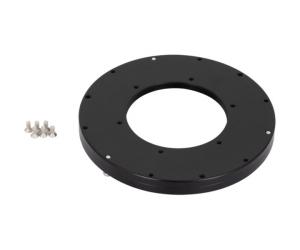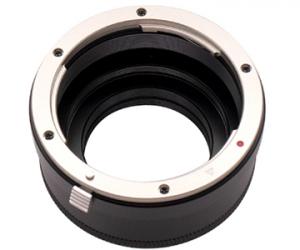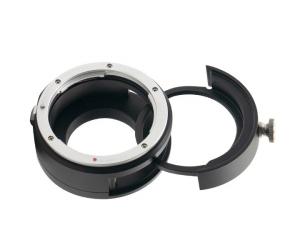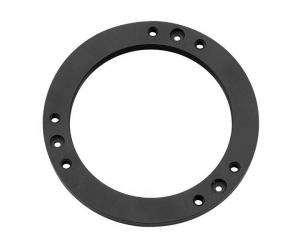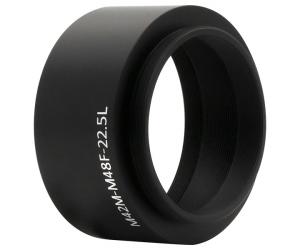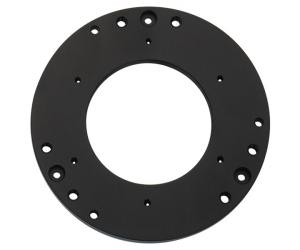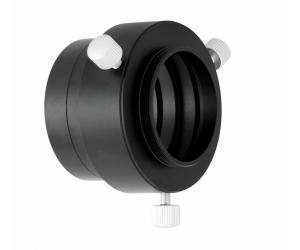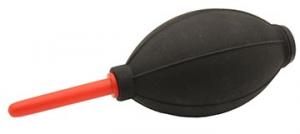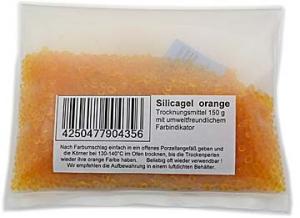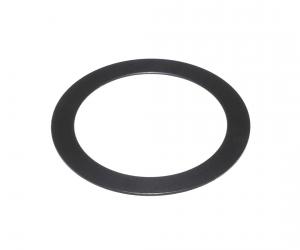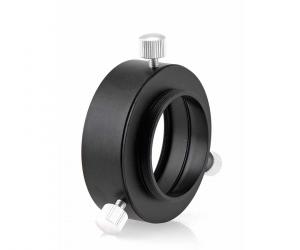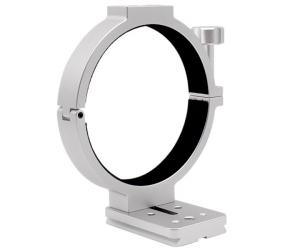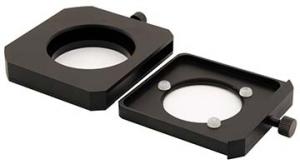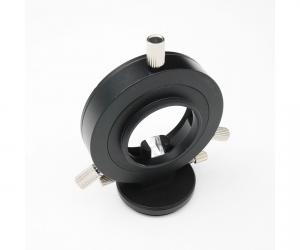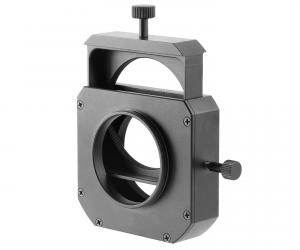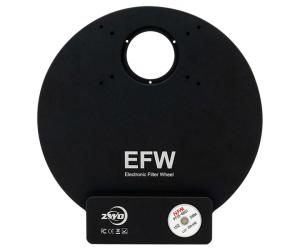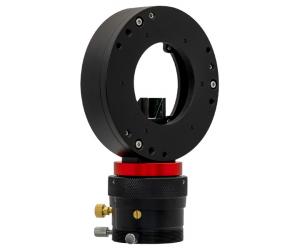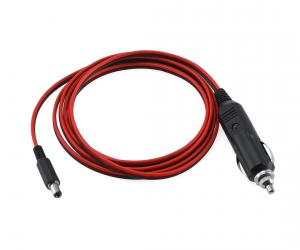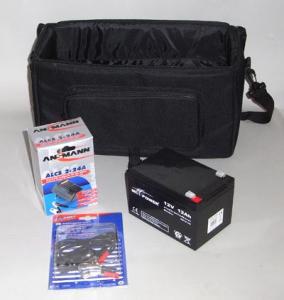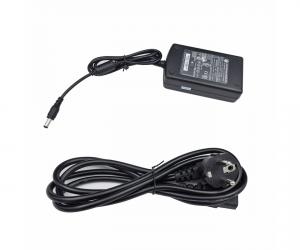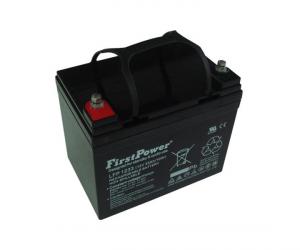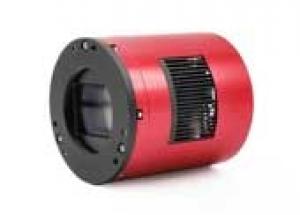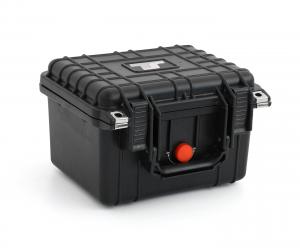- Telescopes
- Overview:
Telescopes - Achromatic Refractor
- Apochromatic Refractor
- Overview:
Apochromatic Refractor - ED Refractor - less color aberration than an achromatic
- SD APO - color free 2-element APO objective
- EDT APO - 3 element ED objective
- High End APO with 3-element APO objective - no color aberation
- Flatfield APO with flat field for Astrophotography
- All Apos and EDs from all manufacturers - large overview
- TS APO and ED from Japan with high quality optics
- Overview:
- Newtonian Telescopes
- Dobsonian Telescopes
- RC Ritchey Chretien Telescopes
- Casssegrain Telescopes
- Reflektor Telescopce with Lens Correcture
- Maksutov Cassegrain Telescopes
- GoTo Telescopes
- Solar Telescopes H-Alpha
- Overview:
- Mounts Tripods Rings Rails Power Supply ...
- Overview:
Mounts Tripods Rings Rails Power Supply ... - Mounts Equatorial with GoTo
- Mounts Equatorial without GoTo
- Mounts Azimutal with GoTo
- Mounts Azimutal without GoTo
- Mounts GoTo - Harmonic Drive
- Travel mounts for astro imaging
- Tripods Piers Polar Wedges
- Mount Control & Electronics
- Dovetail Clamps, Plates and Mount Adapters
- Tube Rings
- Power Supply
- Counterweights Balance Weights
- Mount Accessories - Other
- Overview:
- Telescope Accessories
- Overview:
Telescope Accessories - Eyepieces
- Barlows & Reducer Lenses
- Diagonal Mirrors and Prisms
- Binocular Viewers
- Finder Scopes
- Telescope Collimation and Test
- Cleaning Tools
- Transport and Storage
- Dust protection for Telescopes & Accessories
- Stray Light Protection
- Dewcaps and Heater
- Focusers, Adapters, Motorfocus
- Telescope DIY & Improvement
- Other telescope accessories
- Replacement Parts
- Overview:
- Filters
- Overview:
Filters - Color Filters and Color Filtersets
- Nebular Filters for Visual Observing
- Neutral-Density and Polfilter
- Photo Narrowband Nebular Filters
- Photo Broadband Filters
- Photo Planetary Filters
- Photo R-G-B and IR Cut Filters
- Photo - Filtersets
- Photometric Filters
- Clip Filter for DSLR Cameras
- Filter Wheels and Filterslider
- Solar Filters for white light
- Solarfilter for H-Alpha and Calcium
- Overview:
- Adaptors
- Overview:
Adaptors - Adapter 1,25" and 24,5mm
- Adapter 2"
- Adapter T2 - M42x0.75
- Adapter M48x0,75
- Adapter M54
- Adapter SC
- Adapter M63
- Adapter M68
- Adapter to other Threads
- Adapter Extensions
- Adapter camera bayonet
- Adapter Objective Filterthread
- Adapter Quick Changing , Rotation
- Adapter Eyepiece Projection
- Adapters Tilting
- Overview:
- Astrophotography and Photography
- Overview:
Astrophotography and Photography - Cooled Cameras
- Cameras without Cooling
- Deep-Sky Cameras uncooled
- Set-Offers Camera, Filter, Wheels
- Acessories for Cameras
- Travel mounts for astro imaging
- Imaging Correctors for Telescopes
- Autoguiding Cameras & Sets
- Everything for Guiding
- Focusing aids - Bahtinov mascs
- Flat Field foils and boxes
- Lenses for Cameras
- Piggyback Camera Holder
- Camera Bags, Photocases & more
- Digital Camera and Smartphone Adapter
- Other photo accessories
- Overview:
- Binoculars, Spotting Scopes, Microscopes, Range Finders
- Overview:
Binoculars, Spotting Scopes, Microscopes, Range Finders - Roof Prism Binoculars
- Binoculars with Porro prisms
- Binoculars from 100mm Aperture
- Binoculars with 1,25 inch eyepieces
- TSMX APO Binoculars
- Binoculars for Astronomy
- Binoculars Hiking Bird watching
- Monoculars - Opera Binoculars
- Accessories for Binoculars
- Spotting Scopes
- Range Finders
- Microscopy
- Bags for Phototripods & Binoculars
- Overview:
- Phototripods and Binomounts
- Books, Software
- Overview:
Books, Software - Books for Astronomy Beginners
- Star Charts and Planispheres
- Books about our Solar System
- Observing Tips for Amateurs
- Popular Astronomy Literature
- Teaching material
- Astrophotography books
- Telescopes, Observatories, Construction
- Calendars Yearbooks
- Software, Star Charts
- Books for Microscopers
- Books Nature and Animals
- Nature Photography TimeLapse
- Overview:
- Night Vision, Magnifiers, Weather, Domes & more
- Beginner Astronomy and Gift Ideas
- Second Hand & Special Offers
- New products
Manufacturer: ASI - ZWO
Product number: ASI2600MC-P
EUR2590.00new
EUR 2.590,00
incl. 19 % VAT (DE)
The VAT indicated refers to that applicable in Germany. After logging in, the VAT amount is adjusted to the applicable VAT of the stored delivery country. Therefore, the final price may vary accordingly.
excl. 6.95 € shipping costs (DE)
more details to the shipping costs ...Please log in to calculate shipping costs to your country.
rating: 5.0 of 5ZWO Color Astro Camera ASI 2600MC-PRO cooled, Sensor D= 28.3 mm2
- Details..
- Technical data..
- In the box..
- Reviews..
- FAQ..
ZWO ASI2600MC Pro - powerful color astro camera
The colour sensor in APS-C format convinces with its extremely high sensitivity and 16-bit data depth. Even with longer exposure times, the stars will not burn out. You get a much better dynamic.One of the outstanding features of the ASI 2600MC Pro is its sensational light sensitivity. The QE of 80% by the BACK ILLUMINATION technology and the non-existent amplifier glow make the camera very suitable for all astronomical applications, but especially for deep sky astrophotography.
The "single shot" colour camera offers more comfort than monochrome cameras. Not everyone wants to go through the laborious L-RGB process for beautiful coloured nebula or planet images. The color cameras offer you the possibility to get beautiful pictures without changing filters. In direct comparison to the DSLR camera, the ASI camera convinces with a much higher light sensitivity, a smoother image and significantly more depth. Stars don´t burn out that easy.
Further advantages and product features of the ASI 2600MC Pro color camera:
Application areas of the camera:
Back illumination technology
Sony´s back-illuminated CMOS image sensor improves sensitivity and noise reduction - the key factors to enhancing image quality, while radically realigning their fundamental pixel structure from front-illumination to back-illumination. It has retained the advantages of CMOS image sensors such as low power consumption and high-speed operation.The backside exposure improves the light absorption and increases the amount of light at the same time. This allows significantly shorter exposure times and leads to an improved quantum efficiency of 80%.
Sony has developed a unique photo-diode structure and on-chip lens optimized for back-illuminated structures, that achieves a higher sensitivity and a lower random noise without light by reducing noise, dark current and defect pixels compared to the conventional front-illuminated structure.
Zero amp glow
Traditional CMOS sensors produce a weak infrared light source during operation quite often seen in the corner of uncalibrated images as the tell tale signs of "amp glow". As the ASI2600MC Pro uses zero amp glow circuitry, you won´t have to worry about amp glow even when using high gain, long exposure imaging.Anti-dew heater integrated
The ASI2600MC Pro comes with the polyimide heater that can avoid any dew problems.The anti-dew heater, which fits completely onto the protective window, heats it up slightly to prevent condensation problems.
The power of the anti-dew heater is approx. 5 W. It can be turned off in the software to save power.
Important: external power supply required!
This camera requires 1 amp even in uncooled operation, which is a problem for USB sockets on computers, because they are only rated for 900 mA (0.9 A).Stable operation of the camera is therefore only possible with an external 12 V power supply.
Optimal support before and after the purchase through Teleskop-Service:
We work with the cameras ourselves and can offer you optimal advice. Which camera fits to your telescope, how do you achieve the optimal adaptation? Teleskop-Service is one of the largest ZWO dealers. Through our contacts we also offer the best possible service after the purchase.Practical tip 1 from TS: Integration of 2" filters, 360° rotation and quick coupling
The camera is often used on correctors that do not have a filter thread. In addition, the filters should always be used as close as possible to the camera. Here we offer you a solution that can do much more.The adaptation is very simple, the 21 mm T2 extension is replaced by:
One tuning ring comes to the camera side, one tuning ring comes to the telescope side of the rotator. Then screw on the M42-M48 adapter with 16.5 mm length and you are in the right distance with the camera.
Practical tip 2 from TS: Storage of cameras and accessories
Especially in our latitudes, the nights are often very humid. This humidity condenses on your camera, eyepiece or filter when they come into the warm interior of the apartment. Especially cooled cameras are affected by this. Quickly a photo session is over because the sensor ices up.Good storage is an important prevention against dew and also extends the life span.
After use, put the camera immediately into the TS Protect Case and add some silica gel. During storage, the silica gel will suck the moisture out of the camera. At the same time, the penetration of humid room air is prevented. Dry storage even allows the small dry tablets in cooled cameras to partially regenerate. Your camera or accessories are always ready for you in optimal condition. You can find the silica gel and the case in our product recommendations.
Downloads, drivers:
ZWO provides software and drivers online for free download.Software and drivers for all ZWO cameras
Frequently asked questions about ZWO cameras:
The FAQ area is constantly updated by ZWO, here you will find answers to many questions.FAQ about ZWO cameras
ZWO Users Forum
Manuals for ZWO products:
The manuals page is constantly updated by ZWO, here you can find user guides for ZWO products.Link to the manuals
How to clean my ZWO camera:
The manufacturer provides a manual that covers how to clean an ASI camera and regenerate the desiccant tablets: Please click here.Astrophotographic results obtained with this camera on Astrobin
Here you can find some astrophotographs made with this camera model: Link to Astrobin| Sensor: | Sony IMX571 (back-illuminated CMOS color sensor) |
| Sensor size: | 23.5 mm x 15.7 mm, diagonal 28.3 mm |
| Pixel size: | 3.76 µm |
| Resolution: | 26 megapixels |
| Pixel array: | 6248x4176 pixels |
| Exposure Range: | 32 µs to 2000 s |
| Frame rate: | 3.51 fps |
| ADC: | 16 bit |
| Cooling: | Powerful Peltier cooling - 35 °C below ambient |
| Full well: | 50 ke |
| Readout noise: | 1.0 to 3.3 e- |
| Sensitivity: | Peak 80% QE |
| Zero amp glow design: | Yes |
| Window type: | IR cut |
| Anti-dew measures: | Anti-dew heater, 5 W, can be turned off |
| Data interface: | USB3.0 (USB2.0 compatible) |
| Power consumption: | 12 V, 3 A (power supply not included) |
| Telescope connection: | M42x0.75 female thread |
| Working distance from female thread to sensor: | 17.5 mm |
| Diameter: | 90 mm |
| Length: | 97 mm |
| Weight: | 0.7 kg |
Astrophotographic results obtained with this camera on Astrobin
Here you can find some astrophotographs made with this camera model: Link to AstrobinImage by our customer Wolfgang Daseler:
(Please click on the image for a larger photograph) Object: Cirrus Nebula
Object: Cirrus NebulaPhotographer: Wolfgang Daseler
Imaging optics: Sky-Watcher Esprit 80ED
Camera: ZWO ASI2600
Exposure: 5 h with STC filter, 5 h with L-eXtreme filter
Processing of the large image by TS: Only resizing to a width of 1440 pixels
Congratulations on this beautiful photograph!
Experience report of our customer Detlef Lind
Since I use beside my RC8 an Edge HD11 with 2788mm focal length (with Hyperstar 560mm) also apo refractors with the focal lengths 360mm, 480mm and 525mm, my ASI071MC-Pro was often only a compromise from the sampling point of view. For the shorter focal lengths, such as 560mm with the Hyperstar optics, smaller pixel dimensions than 4.58 µm are appropriate if one prefers the superpixel option for image evaluation.So I ordered the ASI 2600MC-Pro from TS, which promises not only short exposure times in the deep sky range but also advantages in planetary and lunar photography with a pixel size of 3.76 µm due to the higher quantum efficiency of the IMX571 sensor and 16 bit readout. For example, with the RC8 I only need a dual barlow, which brings a higher light intensity to the imaging optics when filming.
Now for the results:
As evidence, I attach two images taken with my RC8. In both cases, the focal length was reduced to 1326mm with the photoline reducer:
 The first one shows Messier 106, where because of partly disturbing moon a total of 183 light frames with exposure times from 3 to 10 minutes were made in 6 nights with the NB1 three band filter (total duration and 16 hours).
The first one shows Messier 106, where because of partly disturbing moon a total of 183 light frames with exposure times from 3 to 10 minutes were made in 6 nights with the NB1 three band filter (total duration and 16 hours).  The second is a mosaic for which Messier 81 and Messier 82 were each imaged for 3 hours in dark skies with 4-minute frames through a neodymium filter.
The second is a mosaic for which Messier 81 and Messier 82 were each imaged for 3 hours in dark skies with 4-minute frames through a neodymium filter.Detlef Lind
Congratulations for the nice results!
Images by our customer Tobias Lamb
He started the beautiful hobby of astrophotography at the end of 2020 and has already made amazing progress, as the following images (larger version by clicking) prove: Object: The Horsehead Nebula (IC 434)
Object: The Horsehead Nebula (IC 434)Photographer: Tobias Lamb from Stockheim (Oberfranken, Germany)
Telescope: TS-Optics 94EDPH 7-Element - Flatfield Apo
Imaging Camera: ZWO ASI 2600MC-Pro
Camera control with smartphone or tablet (ASI Camera Controller): ZWO ASIAIR Pro
Filter: Optolong L-Extreme 2" Filter
Filter Drawer: ZWO for 2" Filters
Guiding Scope: TS-Optics Deluxe 50 mm finder
Guiding Camera: ASI120MINI
Mount: Skywatcher HEQ-5 (GoTo)
Mount Control: PegasusAstro EQDIR USB
 Objekt: The Jellyfish Nebula (IC 443)
Objekt: The Jellyfish Nebula (IC 443)Photographer: Tobias Lamb from Stockheim (Oberfranken, Germany)
Telescope: TS-Optics 94EDPH 7-Element - Flatfield Apo
Imaging Camera: ZWO ASI 2600MC-Pro
Camera control with smartphone or tablet (ASI Camera Controller): ZWO ASIAIR Pro
Filter: Optolong L-Extreme 2" Filter
Filter Drawer: ZWO for 2" Filters
Guiding Scope: TS-Optics Deluxe 50 mm finder
Guiding Camera: ASI120MINI
Mount: Skywatcher HEQ-5 (GoTo)
Mount Control: PegasusAstro EQDIR USB
 Objekt: Christmas Tree Cluster, Cone Nebula (NGC 2264)
Objekt: Christmas Tree Cluster, Cone Nebula (NGC 2264)Photographer: Tobias Lamb from Stockheim (Oberfranken, Germany)
Telescope: TS-Optics 94EDPH 7-Element - Flatfield Apo
Imaging Camera: ZWO ASI 2600MC-Pro
Camera control with smartphone or tablet (ASI Camera Controller): ZWO ASIAIR Pro
Filter: Optolong L-Extreme 2" Filter
Filter Drawer: ZWO for 2" Filters
Guiding Scope: TS-Optics Deluxe 50 mm finder
Guiding Camera: ASI120MINI
Mount: Skywatcher HEQ-5 (GoTo)
Mount Control: PegasusAstro EQDIR USB
 Objekt: The Rosette Nebula (NGC 2244)
Objekt: The Rosette Nebula (NGC 2244)Photographer: Tobias Lamb from Stockheim (Oberfranken, Germany)
Telescope: TS-Optics 94EDPH 7-Element - Flatfield Apo
Imaging Camera: ZWO ASI 2600MC-Pro
Camera control with smartphone or tablet (ASI Camera Controller): ZWO ASIAIR Pro
Filter: Optolong L-Extreme 2" Filter
Filter Drawer: ZWO for 2" Filters
Guiding Scope: TS-Optics Deluxe 50 mm finder
Guiding Camera: ASI120MINI
Mount: Skywatcher HEQ-5 (GoTo)
Mount Control: PegasusAstro EQDIR USB
 Objekt: Thor´s Helmet (NGC 2359)
Objekt: Thor´s Helmet (NGC 2359)Photographer: Tobias Lamb from Stockheim (Oberfranken, Germany)
Telescope: TS-Optics 94EDPH 7-Element - Flatfield Apo
Imaging Camera: ZWO ASI 2600MC-Pro
Camera control with smartphone or tablet (ASI Camera Controller): ZWO ASIAIR Pro
Filter: Optolong L-Extreme 2" Filter
Filter Drawer: ZWO for 2" Filters
Guiding Scope: TS-Optics Deluxe 50 mm finder
Guiding Camera: ASI120MINI
Mount: Skywatcher HEQ-5 (GoTo)
Mount Control: PegasusAstro EQDIR USB
 Objekt: Leo Triplett (M65, M66, NGC 3628)
Objekt: Leo Triplett (M65, M66, NGC 3628)Photographer: Tobias Lamb from Stockheim (Oberfranken, Germany)
Telescope: TS-Optics 94EDPH 7-Element - Flatfield Apo
Imaging Camera: ZWO ASI 2600MC-Pro
Camera control with smartphone or tablet (ASI Camera Controller): ZWO ASIAIR Pro
Filter: Optolong L-Extreme 2" Filter
Filter Drawer: ZWO for 2" Filters
Guiding Scope: TS-Optics Deluxe 50 mm finder
Guiding Camera: ASI120MINI
Mount: Skywatcher HEQ-5 (GoTo)
Mount Control: PegasusAstro EQDIR USB
 Objekt: The Pleiades (M45)
Objekt: The Pleiades (M45)Photographer: Tobias Lamb from Stockheim (Oberfranken, Germany)
Telescope: TS-Optics 94EDPH 7-Element - Flatfield Apo
Imaging Camera: ZWO ASI 2600MC-Pro
Camera control with smartphone or tablet (ASI Camera Controller): ZWO ASIAIR Pro
Filter: Optolong L-Extreme 2" Filter
Filter Drawer: ZWO for 2" Filters
Guiding Scope: TS-Optics Deluxe 50 mm finder
Guiding Camera: ASI120MINI
Mount: Skywatcher HEQ-5 (GoTo)
Mount Control: PegasusAstro EQDIR USB
Thank you very much for these amazing images!
Respect also for the great equipment.
Photo Credits: Tobias Lamb
https://www.facebook.com/lambson.vom.dach
https://www.instagram.com/dobbee86
Image by our customer Andreas Tofahrn:
(Please click on the image for a larger photograph) Motif: Constellation Orion, shot with camera lens
Motif: Constellation Orion, shot with camera lensIndividual objects: Messier 78 (M 78), Horsehead Nebula (B 33), Flame Nebula (NGC 2024), Running Man Nebula (in Sh2-279 resp. NGC 1977), Orion Nebula (M 42)
Photographer: Andreas Tofahrn
Location: Hoherodskopf, Bortle 5, 50% moon, about -10 °C
Imaging optics: Nikon Micro Nikkor 55/2.8 AIS, stopped down to f/4
Adapter: ZWO Adapter Nikon to T2 (ASIT2-Nikon)
Camera: ZWO ASI2600MC Pro (ASI2600MC-P)
Exposure: 129x 120 s (4.3 h) at gain 100
Mount: Astro 5 (similar to Bresser EXOS-2, Celestron AVX or Skywatcher EQ5)
Control: ZWO ASIair Plus (ASIAIRPLUS)
Thank you for this magnificent photo!
Question:
Camera control via Sharpcap possible?
Answer from Teleskop-Service:
It is possible to control the camera with Sharpcap, for this purpose the latest version of Sharpcap must be requested. (as of February 6, 2020)
Question:
Why does ZW Optical recommend a maximum gain of 100?
Answer from Teleskop-Service:
At a value of 100 the HCG High Gain mode is activated, which drastically reduces the readout noise without reducing the dynamic range too much. A higher gain does not result in a significant reduction of the readout noise anymore, but successively reduces the dynamic range.
Question:
Will my Pro camera work without extra power supply if I don´t turn on the cooling?
Answer from Teleskop-Service:
No, the current Pro cameras always require extra power supply, even without cooling.
Recommended accessories
Adaptation Suggestion
Adaptors
Cleaning & Collimating
Customers who bought this product also bought...
General Accessories
Photo Acessories
Filter Quick Changer incl. 1x filter drawer for unmounted 36 mm filters - low profile
EUR 94,90RRP EUR 99,00you save 4.1% (EUR 4,10)
Power Supply
Similar Products
Transport & Covers
TS-Optics Protect Case waterproof hard case - width 271 mm
EUR 34,98RRP EUR 44,95you save 22.2% (EUR 9,97)
Reviews
Written by Tino Peisker
on 2023-01-11
"Der Kamera eilt ja ein guter Ruf voraus. Mein erster Test könnte diesen ebenfalls bestätigen. Sehr vielversprechend was ich bei meinem First Light mit nur 70 Min Belichtungszeit bereits herausarbeiten konnte. "
Written by Petr Bokvaj
on 2022-10-26
"Perfect color camera, in my opinion its good balance between value you get and money"
Written by Andre Dalhoff
on 2022-03-23
"Traumhaftes und sehr empfehlenswertes Gerät. Ist aber auch kein Schnäppchen."
Written by Ullrich Linnemann
on 2021-09-28
"Sehr gut verarbeitete Kamera. Es wird viel Zubehör bereits mitgeliefert. Für die Speicherung der Aufnahmen muss ausreichend Platz auf dem Rechner oder Speichermedium eingeplant werden. Es kommen schon nach kurzer Zeit einige Gigabyte zusammen."
Written by Mathias Böhme
on 2021-06-01
"Ich konnte die Kamera erst zweimal kurz testen und bin schon überzeugt. Die Dynamik ist riesig und die QE macht schwache Objekte auch in der Stadt schon nach kurzer Zeit sichtbar. Kühlung wie erwartet: zuverlässig Sensor: überragend."
Written by Jürgen Kläser
on 2021-05-26
"Macht gute Bilder ohne Verstärkerglühen"
Written by Rolf Johansson
on 2021-04-14
"High quality and easy to use."
Written by Mario Haiser
on 2021-04-08
"Sehr gute Astrokamera"
Written by salvant michael
on 2020-07-08
*****




















